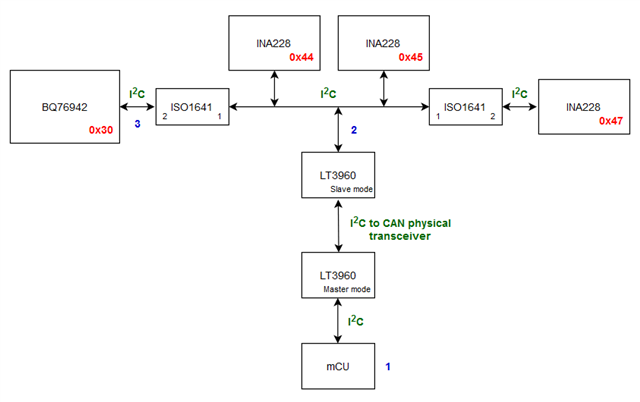Other Parts Discussed in Thread: INA228, BQSTUDIO, , , ISO1641
Hello,
on my circuit I used BQ7694202PFBR IC, for measuring cell voltages of 8 cell battery.
The problem is that my I2C scanner find it on a 0x08 address, but as far as I understand, it should be 0x10? Any idea?
Many thanks,
Kind regards,
Dejan.



